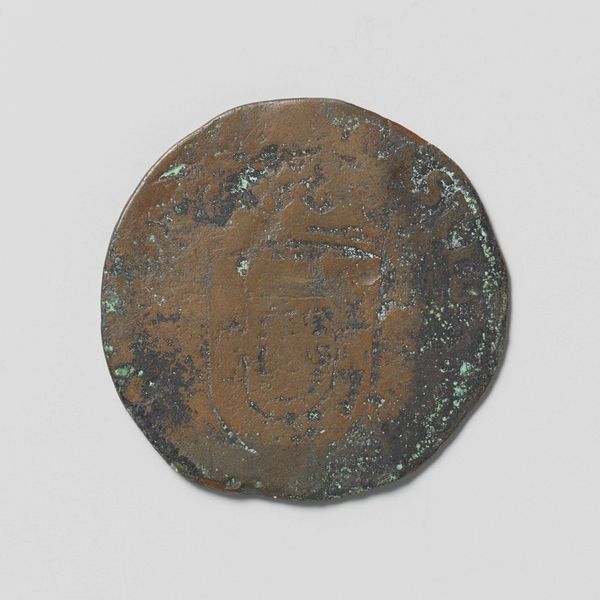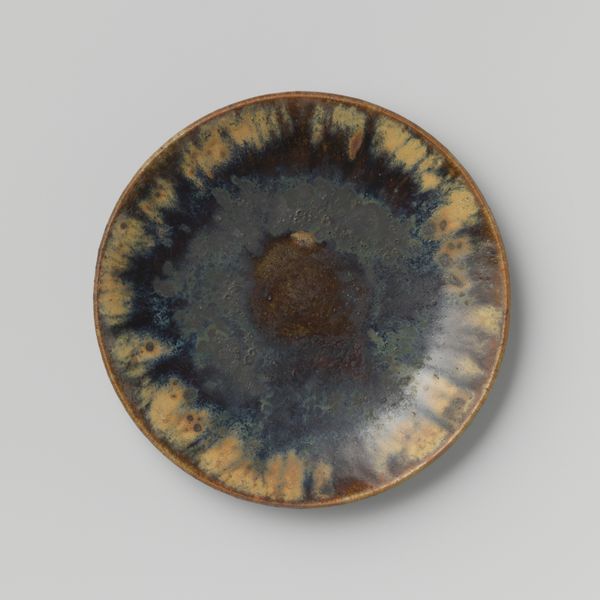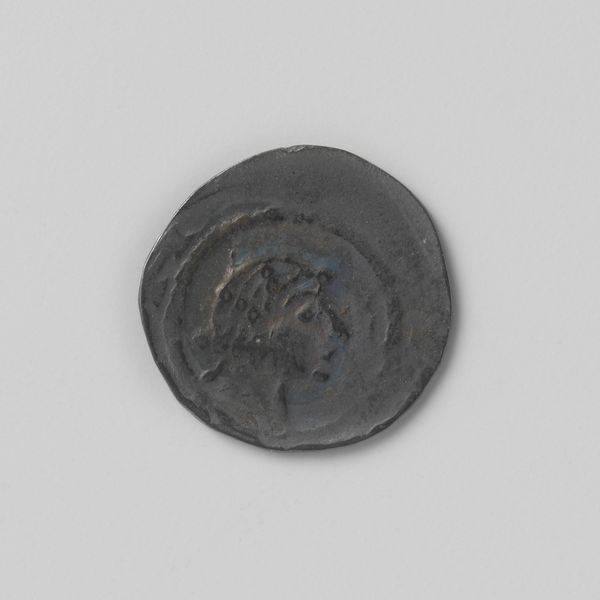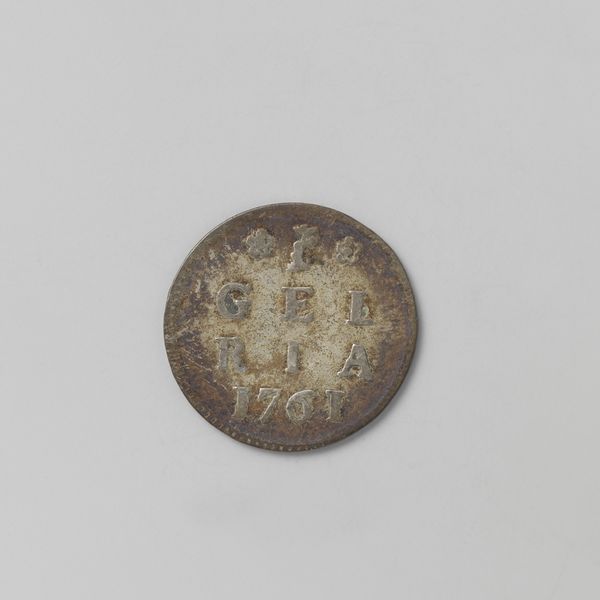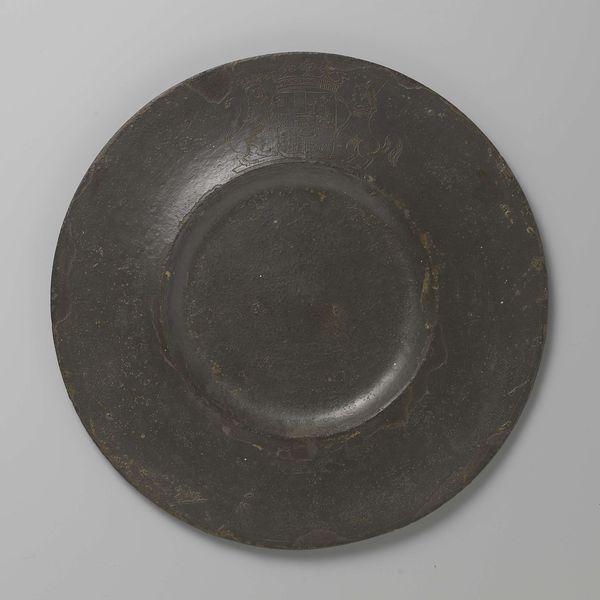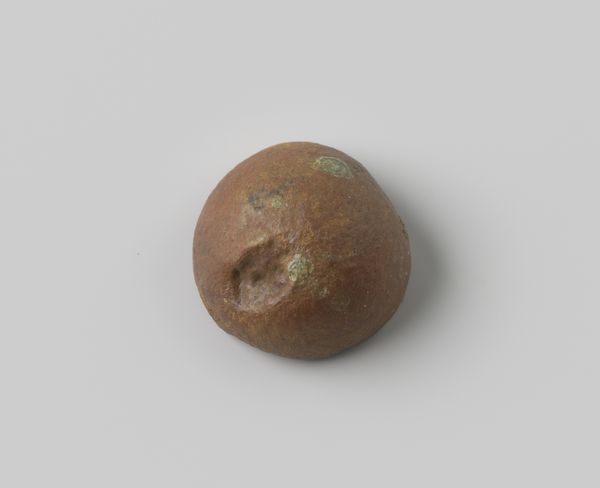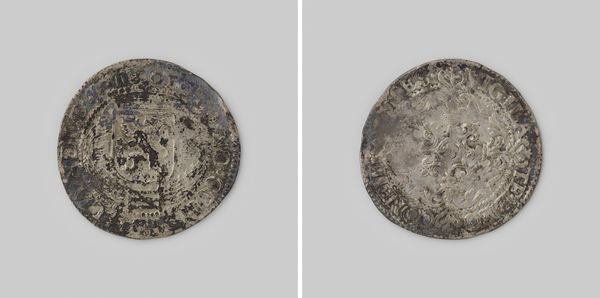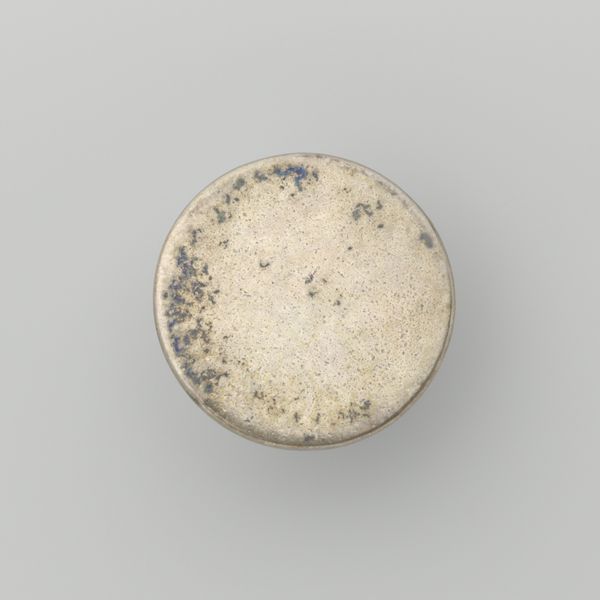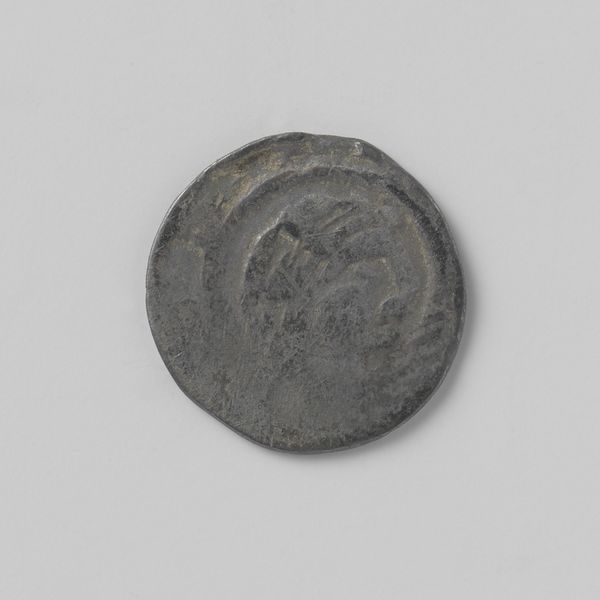
Weegschaal van koper, rond en plat met een opstaand randje waarin drie gaatjes zijn aangebracht c. 1590 - 1596
0:00
0:00
anonymous
Rijksmuseum
metal, ceramic, bronze
#
metal
#
ceramic
#
bronze
#
ceramic
Dimensions: height 0.3 cm, diameter 6.2 cm
Copyright: Rijks Museum: Open Domain
Curator: This intriguing piece before us, held at the Rijksmuseum, is an object known as "Weegschaal van koper, rond en plat met een opstaand randje waarin drie gaatjes zijn aangebracht," or, a copper scale, round and flat with a raised edge featuring three holes. It dates back to around 1590-1596. Editor: Well, my first impression is that its simple form evokes something elemental – like an ancient coin worn smooth by time, reflecting subtle shades of brown and green, revealing the materiality of corroded copper. The round form draws your eye inward. Curator: Indeed. As an iconographer, I’m fascinated by the implied symbolism. Scales, throughout history, are loaded with meanings of justice, balance, and judgment. This isn't just a tool, it’s a cultural touchstone embodying profound concepts. The aging itself communicates the passage of time, and the stories it silently holds. Editor: Structurally, you can see how the artist’s design considerations, such as the raised lip and symmetrical arrangement of the holes, all contribute to the visual stability of the circular design, emphasizing this quality of balance you’ve alluded to. Curator: Precisely. And given the era, likely the late Renaissance, it exists in a nexus of booming trade and scientific inquiry, both demanding precision, yet inevitably tinged with societal inequality, giving a starker meaning to balance itself. Copper as a base metal speaks to more commonplace transactions as opposed to something like gold or silver reserved for elites. Editor: Observe, too, the delicate imperfections on its surface, the pitting and discoloration… These visual markers become essential parts of the aesthetic composition itself. It reveals a history of interactions with hands, weights, objects to be weighed—its semiotic essence arising as a function of decay, bearing witness. Curator: That's where the beauty resides, isn't it? These weren't aesthetic objects but everyday tools infused with the burdens of early commerce, constantly seeking equilibrium. Editor: And in so doing, this modest copper object transcends its initial utility through form and patination, giving visual shape to concepts of valuation in ways a symbol cannot on its own. Curator: Looking at it anew now, I perceive a profound reminder that what we deem worthy of weighing reveals far more about our own values. Editor: A circle of weathered copper holding much more within its form than it can physically weigh, reflecting both cultural values and the elegance of the circle.
Comments
No comments
Be the first to comment and join the conversation on the ultimate creative platform.

